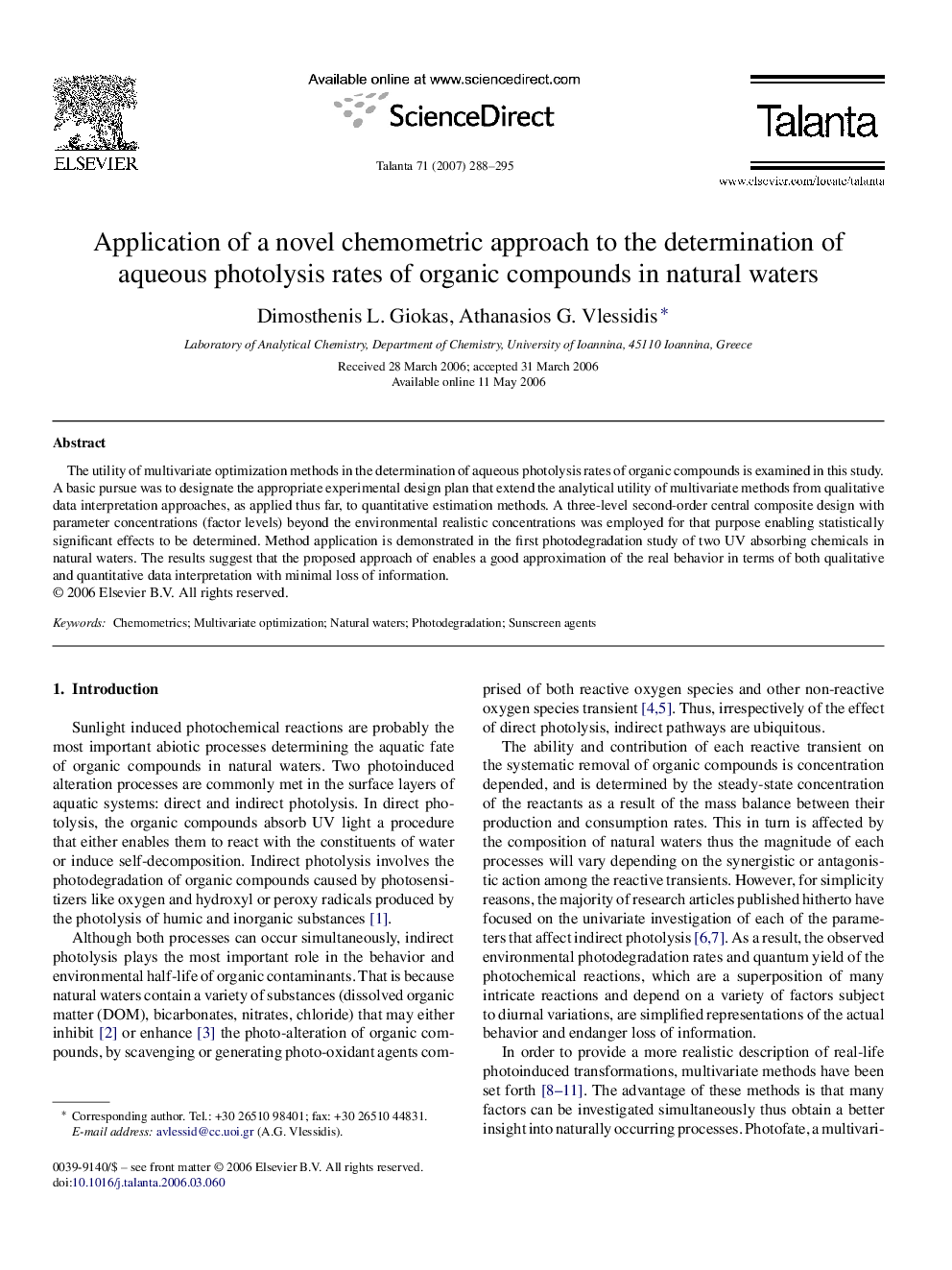| Article ID | Journal | Published Year | Pages | File Type |
|---|---|---|---|---|
| 1246070 | Talanta | 2007 | 8 Pages |
The utility of multivariate optimization methods in the determination of aqueous photolysis rates of organic compounds is examined in this study. A basic pursue was to designate the appropriate experimental design plan that extend the analytical utility of multivariate methods from qualitative data interpretation approaches, as applied thus far, to quantitative estimation methods. A three-level second-order central composite design with parameter concentrations (factor levels) beyond the environmental realistic concentrations was employed for that purpose enabling statistically significant effects to be determined. Method application is demonstrated in the first photodegradation study of two UV absorbing chemicals in natural waters. The results suggest that the proposed approach of enables a good approximation of the real behavior in terms of both qualitative and quantitative data interpretation with minimal loss of information.
